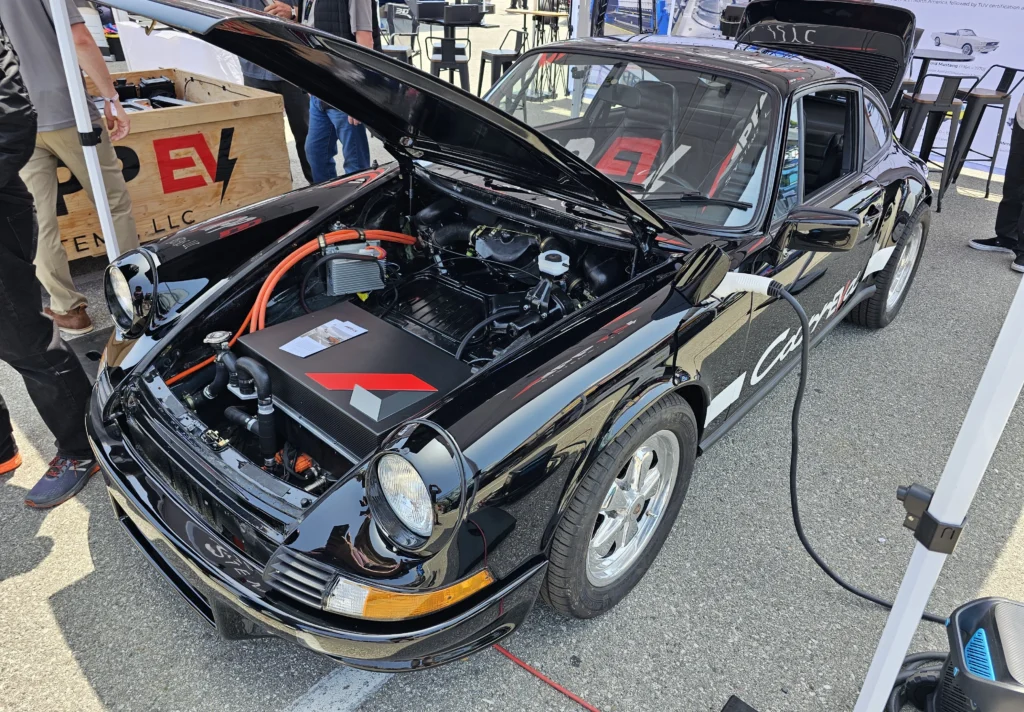
¿Alguna vez has visto tu viejo coche de gasolina y has pensado: "¿Por qué no optar por uno eléctrico?". Ya sea por el aumento del precio del combustible, por preocupaciones medioambientales o simplemente por el antojo de hacerlo tú mismo, convertir tu coche a eléctrico puede ser un proyecto gratificante. Aunque la idea pueda parecer complicada o cara, lo cierto es que, con las herramientas y la planificación adecuadas,... poder hazlo con un presupuesto limitado
Esta guía paso a paso te guía por todo el proceso, desde la selección del vehículo adecuado hasta la salida con tu vehículo eléctrico casero. Te explicaremos los costos estimados, las herramientas que necesitarás y el tiempo que deberías invertir. ¿Listo para ponerte manos a la obra? ¡Comencemos!
Paso 1: Decide si la conversión a EV es adecuada para ti
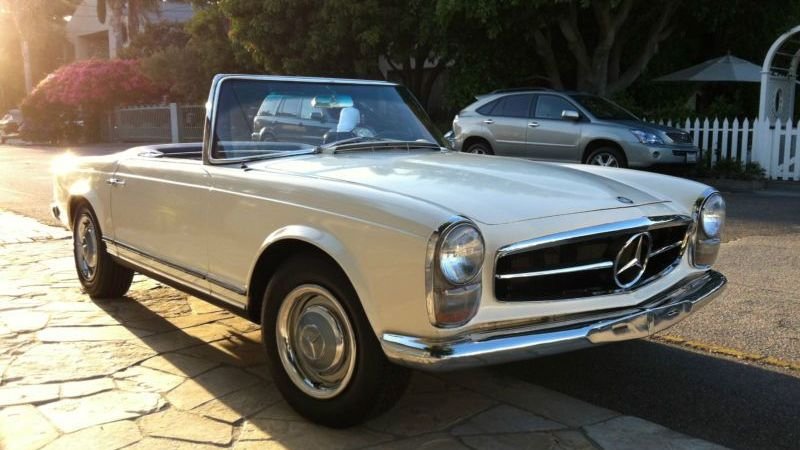
Antes de sumergirse, plantéese algunas preguntas clave:
- ¿Tienes algunos conocimientos básicos de mecánica y electricidad?
- ¿Estás listo para pasar varios fines de semana (o más) en el garaje?
- ¿Podrás vivir con un vehículo que quizás no vaya tan lejos ni tan rápido como un vehículo eléctrico fabricado en fábrica?
Si respondiste “sí” a estas preguntas, ya estás en el camino correcto.
Paso 2: Elija el coche donante adecuado

No todos los vehículos son igualmente aptos para la conversión eléctrica. Necesitas un coche que:
- Ligero – Cuanto más ligero, mejor para maximizar el alcance.
- Transmisión manual – más fácil de adaptar a un motor eléctrico.
- En buen estado estructural – así que no estás invirtiendo en reparar el óxido.
Las opciones populares incluyen modelos más antiguos como el Honda Civic, el Mazda MX-5, el Volkswagen Golf o incluso una camioneta pequeña como la Toyota Hilux.
Costo estimado:
- Auto donante usado en buen estado: $500–$3,000
Paso 3: Consigue tu kit o componentes de conversión para EV
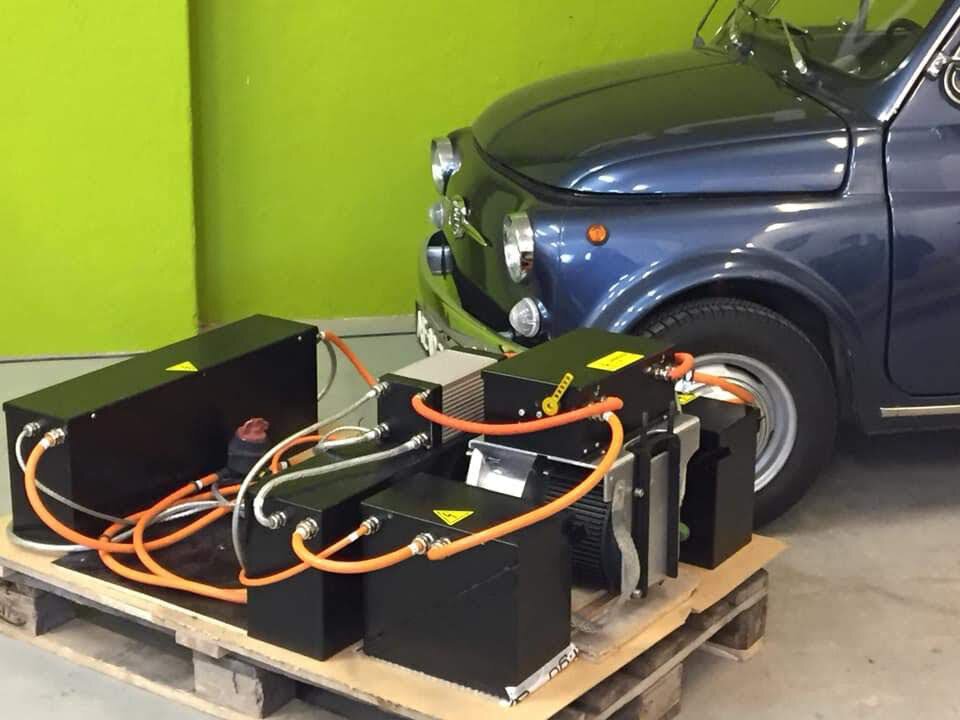
Tienes dos opciones. Puedes:
- Compre un kit de conversión completo, o
- Componentes de origen individualmente.
Componentes básicos que necesitarás:
- Motor eléctrico (generalmente CC o CA)
- Controlador de motor
- Paquete de baterías (se prefiere de iones de litio)
- Cargador
- Convertidor CC-CC (para sistema de 12 V)
- Placa adaptadora (para conectar el motor a la transmisión)
- Controlador del acelerador
- Fusibles, cableado, contactores y equipos de seguridad.
Si tienes un presupuesto ajustado, puedes buscar piezas usadas de vehículos eléctricos descompuestos, como un Nissan Leaf o un Chevy Volt. Los foros de bricolaje, Facebook Marketplace y eBay pueden ser una mina de oro para esto.
Costo estimado:
- Kit completo: $6,000–$10,000
- Adquisición de piezas de bricolaje: $3,000–$7,000
Paso 4: Reúna sus herramientas y equipo de seguridad
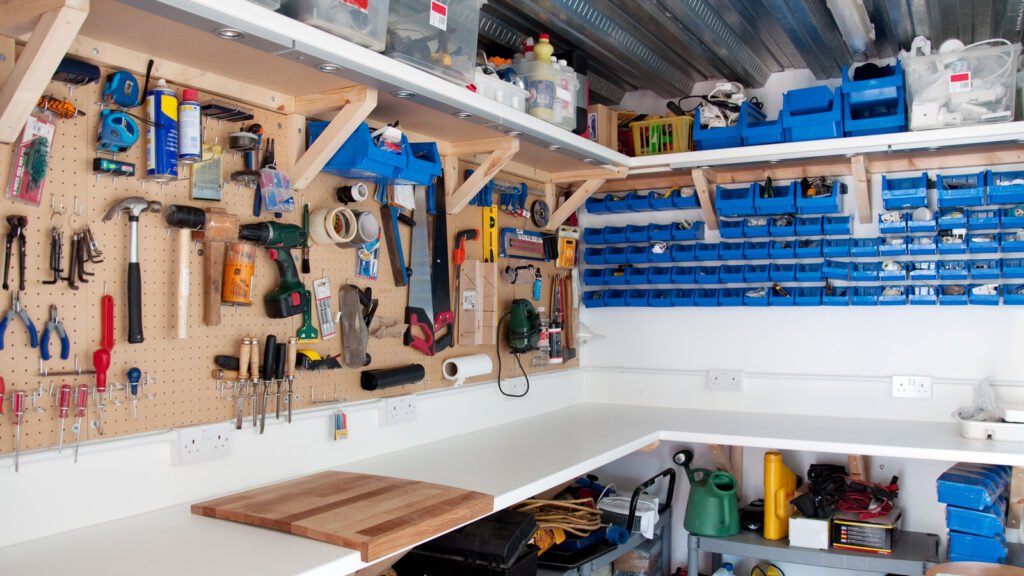
No necesitas una instalación de garaje profesional, pero voluntad necesidad:
Herramientas básicas:
- Juego de llaves de tubo
- Destornilladores
- Soportes de gato
- Polipasto de motor
- llave dinamométrica
- Crimpadoras de cables
- Perforar
- Multímetro
Equipo de seguridad:
- guantes aislantes
- Protección para los ojos
- Extintor de incendios
- Señalización de alto voltaje
Si no tienes alguno de estos equipos, considera pedirlos prestados o alquilarlos. Las bibliotecas de herramientas comunitarias pueden ser un recurso sorprendentemente útil.
Costo estimado:
- Herramientas y equipo de seguridad: $300–$800 (dependiendo de lo que ya tenga)
Paso 5: Retire el sistema de combustión interna
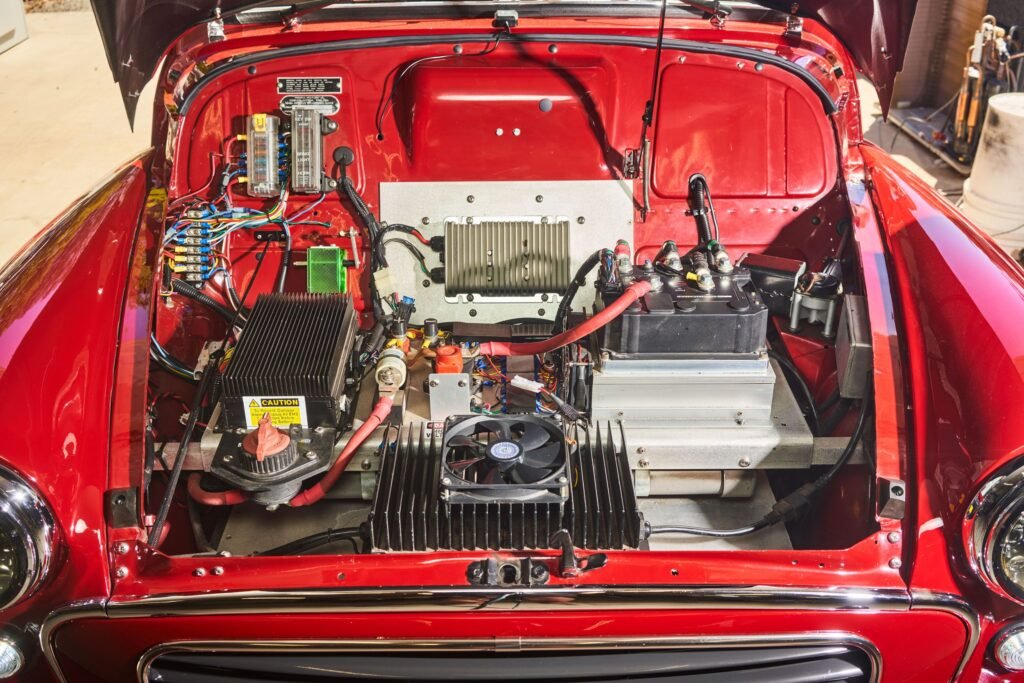
Ahora viene el verdadero trabajo. Tendrás que eliminar:
- Motor
- Sistema de escape
- Tanque de combustible
- Radiador
- Alternador
- Motor de arranque
Este paso puede tomar entre 1 y 3 fines de semana dependiendo de tu experiencia y de si trabajas solo o con amigos.
Consejo profesional: Etiqueta cada cable y manguera que retires, incluso si crees que no los volverás a necesitar. Te ahorrará muchos dolores de cabeza más adelante.
Periodo de tiempo:20–40 horas
Costo:Gratis (¡incluso podrías vender algunas piezas viejas!)
Paso 6: Instale el motor eléctrico y la placa adaptadora
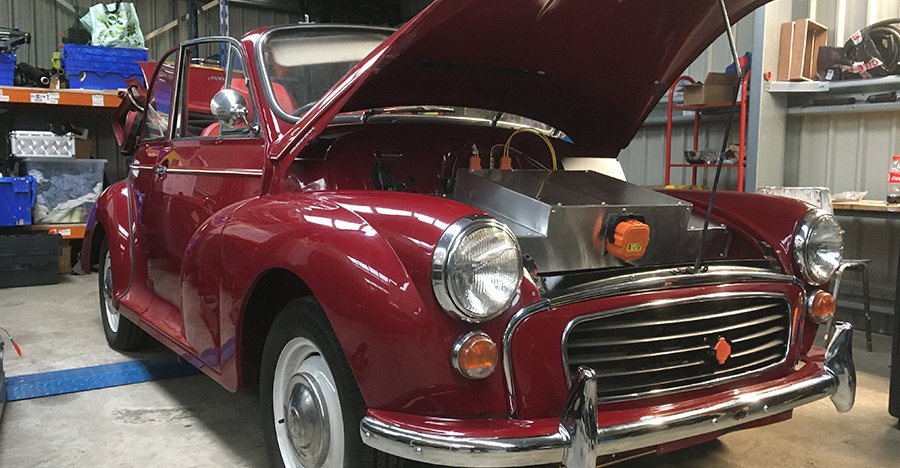
Una vez despejado el compartimento del motor, atornillará el motor eléctrico a la transmisión con una placa adaptadora personalizada. Es posible que necesite construir o comprar soportes de motor para fijar la unidad correctamente.
La alineación es crucial aquí: si el motor no está perfectamente centrado, tendrá problemas de vibración o desgaste prematuro.
Costo estimado:
- Placa adaptadora y soportes: $300–$1,000
Periodo de tiempo:10–20 horas
Paso 7: Cablee el sistema
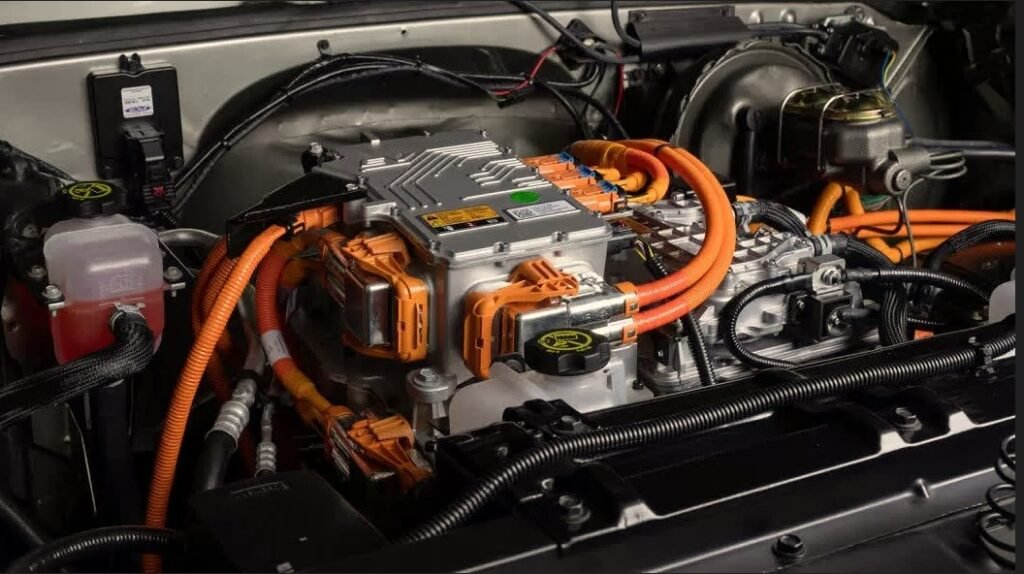
Aquí es donde la cosa se pone técnica. Cablearás:
- El motor al controlador
- Controlador a la batería
- Paquete de baterías al cargador
- Convertidor CC-CC al sistema de 12 V
A muchos aficionados al bricolaje este paso les resulta intimidante. Tómense su tiempo, revisen cada conexión y consulten los diagramas de cableado específicos de sus componentes.
Es una buena idea utilizar cables codificados por colores y tubos termorretráctiles para mantener todo ordenado y seguro.
Costo estimado:
- Cableado y accesorios: $300–$600
Periodo de tiempo:30–50 horas
Paso 8: Instale la batería
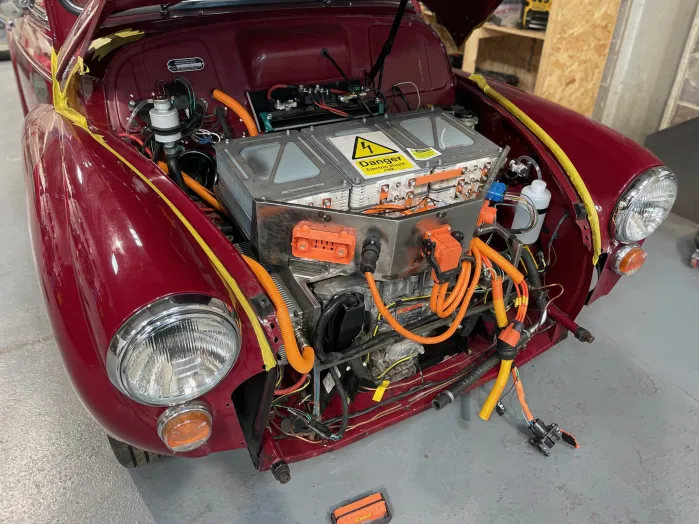
La ubicación de las baterías afecta el manejo y el rendimiento del auto. Normalmente, se dividen entre el compartimento del motor y el maletero para equilibrar el conjunto. Un montaje seguro es fundamental, ya que no querrás que se muevan en un camino con baches.
Asegúrese de que las baterías estén adecuadamente aisladas y que los cables de alto voltaje estén aislados del chasis.
Si tienes un presupuesto ajustado, comienza con un paquete de baterías más pequeño y actualízalo más adelante.
Costo estimado:
- Baterías de iones de litio: $2.000–$5.000
Periodo de tiempo:15–25 horas
Paso 9: Instale el sistema de carga
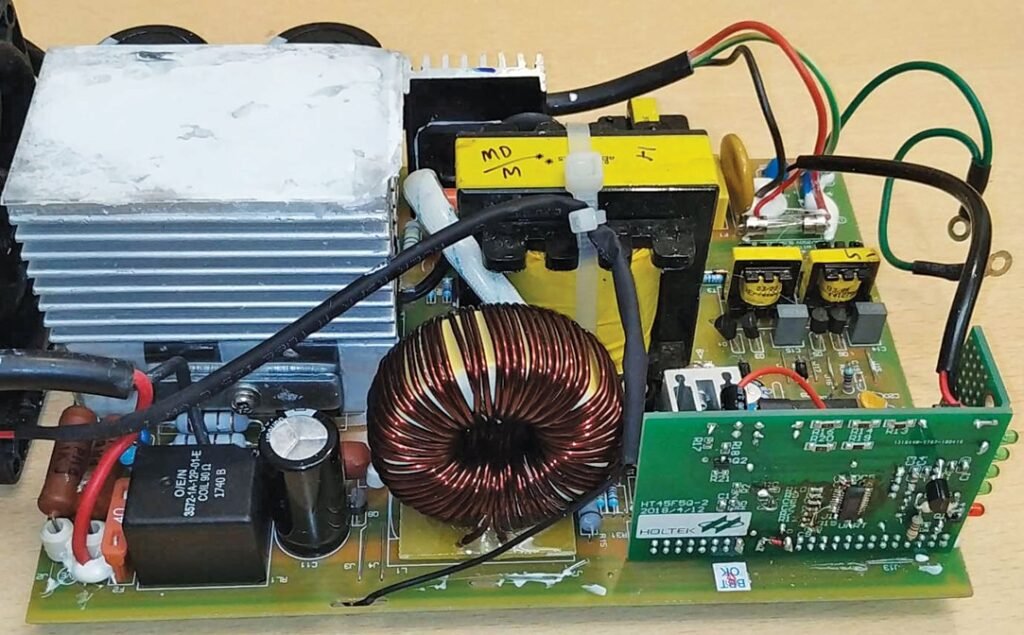
Monte el cargador integrado y conéctelo a la batería. Instale un puerto J1772 (enchufe estándar de nivel 2 para vehículos eléctricos) en un lugar accesible, a menudo reemplazando la tapa del depósito de combustible vieja.
Puede utilizar un cargador de Nivel 1 (120 V) en casa para comenzar o actualizarlo a Nivel 2 (240 V) para una carga más rápida más adelante.
Costo estimado:
- Cargador y puerto integrados: $400–$800
Periodo de tiempo:5–10 horas
Paso 10: Comprobaciones de seguridad y pruebas del sistema
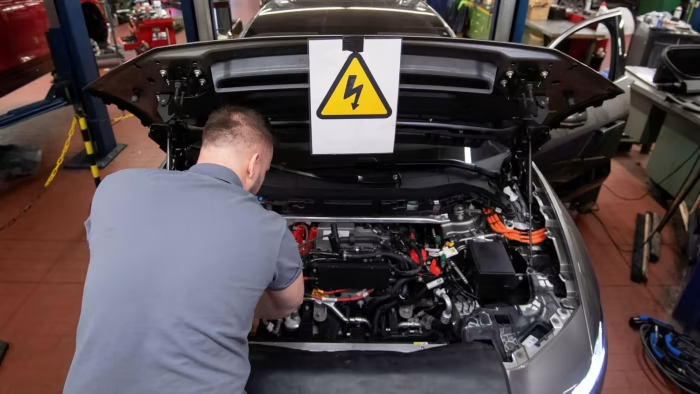
Antes de girar la llave (o el interruptor), verifique dos veces:
- Todo el cableado está correctamente aislado.
- Sin soportes ni tornillos sueltos
- El controlador está programado correctamente
- Los sistemas de freno y dirección funcionan
Pruebe los componentes uno a uno: giro del motor, carga de la batería, energía de los accesorios, etc. Si no está seguro, consulte con un mecánico experto en vehículos eléctricos o únase a un foro de vehículos eléctricos en línea.
Paso 11: Obtenga la certificación y la legalidad
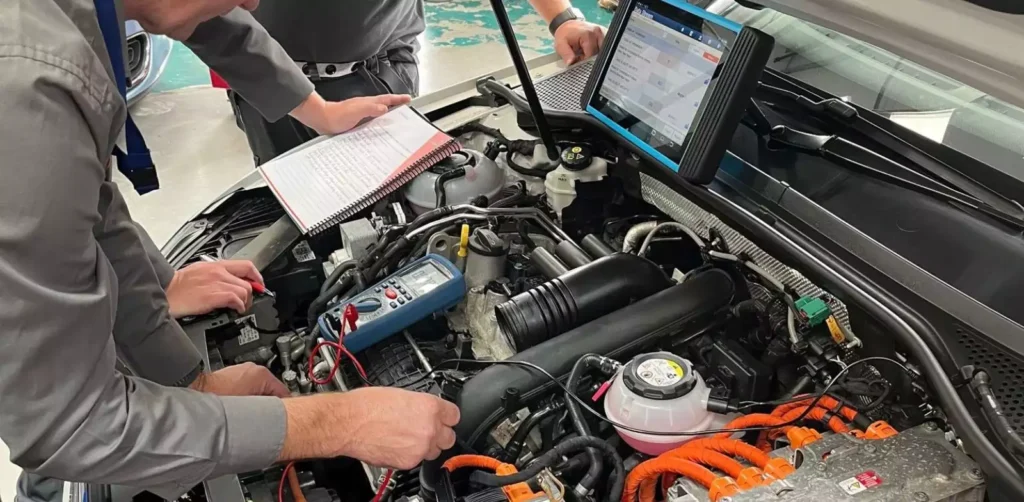
Las regulaciones varían según el país y el estado, pero la mayoría de los lugares requieren:
- Inspección de seguridad
- Trámites de exención de emisiones
- Ajustes de seguros
- Registro actualizado
En algunas áreas, necesitará una certificación de un ingeniero para garantizar que el vehículo esté en condiciones de circular.
Costo estimado:
- Honorarios legales y de registro: $100–$500
Paso 12: ¡Disfruta de tu EV DIY económico!

Una vez que tengas la licencia para circular, llega la parte divertida. Acabas de convertir un viejo devorador de gasolina en un vehículo de uso diario sin emisiones. Claro, tu vehículo eléctrico puede que no sea más rápido que un Tesla, pero ¿la satisfacción de construirlo tú mismo? No tiene precio.
Presupuesto total estimado
| Artículo | Rango de costos |
|---|---|
| Coche donante | $500–$3,000 |
| Kit/piezas de conversión | $3,000–$10,000 |
| Herramientas y equipo de seguridad | $300–$800 |
| Placa adaptadora y soportes | $300–$1,000 |
| Cableado y accesorios | $300–$600 |
| Baterías | $2,000–$5,000 |
| Cargador y puerto de carga | $400–$800 |
| Inspección y honorarios legales | $100–$500 |
| Total | $6,900–$21,700 |
¿Es posible transformar un coche por menos dinero?
Por supuesto. Algunos aficionados al bricolaje ambiciosos lo han logrado por tan solo $5,000:
- Uso de baterías y motores recuperados
- Evitar los aparatos electrónicos no esenciales
- Empezando con un vehículo muy básico
- Haciendo todo el trabajo ellos mismos
Todo depende de cuánto tiempo estés dispuesto a invertir y de lo creativo que seas al conseguir las piezas.
Reflexiones finales
Convertir un coche a eléctrico no se trata solo de ahorrar combustible, sino de aprender, experimentar y construir algo verdaderamente tuyo. La primera vez que oigas el zumbido silencioso del motor y te des cuenta... tú lo hiciste posible, sabrás que cada nudillo raspado y cada sesión de cableado nocturna valieron la pena.
Así que, si eres apasionado, paciente y práctico, te dicen que lo hagas, porque el camino hacia lo eléctrico no tiene por qué estar pavimentado con oro.





